#CleaningRobots
Explore tagged Tumblr posts
Text
Cleaning Robot Market Innovations Drive Demand Across Smart Homes and Healthcare Cleaning Sectors
The cleaning robot market is experiencing significant growth as technology, convenience, and demand for automation converge. These robots, designed to automate various cleaning tasks like vacuuming, floor scrubbing, window cleaning, and pool maintenance, are increasingly popular in both residential and commercial sectors. The surge in interest is driven by improvements in robotics, artificial intelligence, and sensor technology, making cleaning robots more efficient, intelligent, and user-friendly than ever before.

Market Dynamics
One of the primary drivers of the cleaning robot market is the rising demand for smart home devices. As more consumers adopt smart home ecosystems, cleaning robots have become an integral component. Integration with voice assistants like Amazon Alexa and Google Assistant, and smartphone apps, allows users to schedule cleanings, monitor robot activity, and customize cleaning modes remotely.
Urbanization and changing lifestyles are also contributing to market growth. In many households, both partners work full-time, reducing the time available for household chores. Cleaning robots offer a practical solution by performing cleaning tasks autonomously. Furthermore, the COVID-19 pandemic underscored the importance of hygiene, leading to heightened demand for automated cleaning systems in both homes and commercial establishments like hospitals, hotels, and offices.
Product Segmentation and Innovation
The cleaning robot market is segmented into robotic vacuum cleaners, floor scrubbers, window-cleaning robots, and pool-cleaning robots. Among these, robotic vacuum cleaners hold the largest share due to their affordability and wide adoption in residential settings.
Innovation is a key differentiator in the market. Manufacturers are focusing on enhancing the functionality of cleaning robots through features like advanced mapping, obstacle detection, self-emptying bins, and AI-based learning systems. Some high-end models are capable of recognizing room layouts, avoiding objects like wires and pet waste, and adjusting cleaning methods based on surface types.
Moreover, developments in navigation technologies such as LiDAR (Light Detection and Ranging) and SLAM (Simultaneous Localization and Mapping) have significantly improved the performance of these machines. These innovations enable cleaning robots to clean more thoroughly, cover more ground efficiently, and avoid collisions with furniture and walls.
Regional Trends
Geographically, the cleaning robot market is led by North America and Europe due to high disposable incomes, early adoption of smart technologies, and a strong culture of convenience-based consumption. However, the Asia-Pacific region is expected to witness the fastest growth during the forecast period. Countries like China, Japan, and South Korea are driving this trend with advancements in robotics, a growing middle class, and increasing urban living standards.
Commercial Applications and Opportunities
While residential applications dominate, commercial adoption is rising steadily. Cleaning robots are now used in airports, shopping malls, educational institutions, and public transit systems. These commercial robots are often larger, more powerful, and capable of continuous operation with minimal supervision.
The industrial and healthcare sectors are particularly promising. In hospitals and clinics, automated floor scrubbers reduce the risk of cross-contamination, while in factories and warehouses, robotic cleaners maintain hygiene without interrupting operations. This growing commercial demand represents a significant opportunity for manufacturers and service providers.
Challenges and Outlook
Despite its rapid growth, the cleaning robot market faces several challenges. High initial costs for advanced models remain a barrier for many consumers. Additionally, the effectiveness of robotic cleaners in complex or cluttered environments is still limited compared to manual cleaning.
Maintenance and durability are also concerns, especially in commercial applications where robots are expected to operate continuously. Manufacturers must address these issues to improve adoption rates.
Nevertheless, the outlook for the cleaning robot market remains optimistic. The continued integration of AI, machine learning, and Internet of Things (IoT) technologies will likely drive further innovation and performance improvements. As prices fall and consumer awareness increases, cleaning robots are poised to become as ubiquitous as traditional household appliances.
Conclusion
The cleaning robot market stands at a transformative juncture, fueled by technological advancements and shifting consumer habits. As automation becomes more embedded in daily life, these intelligent cleaning machines are evolving from luxury gadgets into household and workplace essentials. In the coming years, the market is expected to grow not only in volume but also in diversity, with more specialized and capable models catering to a wide range of applications.
#CleaningRobotMarket#SmartCleaning#RobotVacuum#HomeAutomation#CleaningRobots#AItechnology#SmartHomeDevices
0 notes
Text
#iRobotDeals#HomeCleaningRobotics#iRobotSavings#AdvancedRobotics#iRobotDiscounts#CleaningTech#iRobot2024#RoboticVacuumDeals#iRobotInnovation#HomeCleaningTech#iRobotOffers#SmartCleaning#iRobotReview#RoboticsForHome#iRobotSpecialOffers#AutomatedCleaning#iRobotTechDeals#CleaningRobots#iRobotDiscount2024#HomeTechDeals#iRobotCleaners#RoboticHomeSolutions#iRobotSmartCleaning#AdvancedCleaningTech#iRobotSavings2024#HomeCleaningInnovation#iRobotVacuumDeals#RoboticsForCleaning#iRobotSpecialSavings#SmartCleaningTech
0 notes
Text
Scientists Reprogram Robot Vacuums for Extra Tasks, Proposing New Roles for Household Helpers
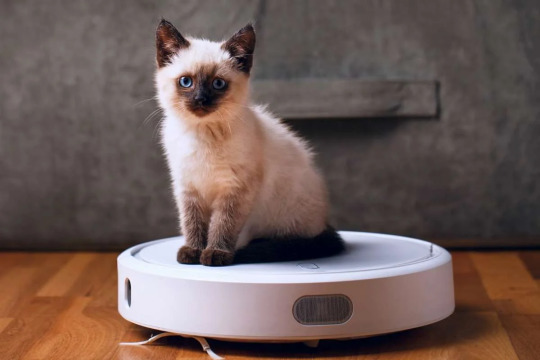
Source: independent.co.uk
Scientists from the University of Bath have reprogrammed a robot vacuum cleaner to perform a range of additional household tasks, aiming to address what they believe is the underutilization of these increasingly popular devices. While robot vacuums are commonly seen as single-task machines used for cleaning, the researchers argue that these devices can do much more with a few simple modifications.
Currently, robot vacuums are typically used for less than two hours a day, yet the researchers contend that with some changes, these devices could take on far more responsibilities. The study emphasizes that modern household robots, such as robot vacuums and lawnmowers, are seen as limited in their capabilities, but with minor adjustments, they could contribute to many other household chores. The growing household robots market, valued at $10.3 billion in 2023 and projected to reach $24.5 billion by 2028, indicates that these devices are becoming more common, which makes their untapped potential even more significant.
Reprogramming Roomba for Additional Tasks
To demonstrate the potential, the scientists reprogrammed a Roomba vacuum to perform four additional functions. One of the modifications included attaching a mobile phone charger to the vacuum, allowing it to follow the user around the home and charge their phone while cleaning. Another task involved adding a projector to the vacuum, which could display workout videos on the wall or ceiling, assisting users with home exercises.
The researchers also reprogrammed the vacuum to function as a “home monitor,” enabling live video streaming to check on household appliances like the oven. Additionally, they created a “Do Not Disturb” mode, where the robot could be sent to a specific location to avoid interrupting a user. Other proposed modifications included adding a robotic arm and a cart to help the robot carry groceries from the car to the kitchen.
Yoshiaki Shiokawa, a PhD student and lead author of the study, explained that these modifications show how robot vacuums, which typically sit idle for much of the day, could be more useful if adapted to perform a range of functions around the house. While some of these tasks require upgrades and additional accessories, Shiokawa emphasized that the potential for expanded use is clear.
Embracing Adaptable Robots for Daily Life
The researchers suggest that the “idle time” of robot vacuums offers a unique opportunity to integrate them into daily life in more meaningful ways. Dr. Adwait Sharma, co-author of the study, echoed this sentiment, noting that the idle periods of robots are perfect for reprogramming them to take on various tasks that go beyond their core function.
While some modifications may require specialized parts and upgrades that the average vacuum owner may not have, the study presents a vision where robots can seamlessly fit into homes as multifunctional devices. By extending the utility of household robots, people can expect to see these devices perform a variety of roles, from fitness assistants to home monitors. The study highlights the potential for reprogramming robots to better serve the evolving needs of modern households, making them more adaptable and integrated into everyday tasks.
Visit Enterprise Wired for the Most Recent Information.
0 notes
Text

How Vulcan is Revolutionizing Industrial Cleaning with Smart Automation
Traditional industrial cleaning is labor-intensive and requires continuous effort. Vulcan, the autonomous industrial cleaning robot, is designed to handle large-scale cleaning with minimal intervention.
Key Features of Vulcan
AI Navigation: Smart mapping for efficient cleaning.
Powerful Suction: Removes tough dirt and debris.
Automated Maintenance: Ensures uninterrupted operations.
Businesses can benefit from Vulcan’s intelligent cleaning capabilities, allowing them to maintain hygiene with ease.
0 notes
Text
Cleaning Robot Market Forecast and Outlook (2024-2031)
The Global Cleaning Robot Market is estimated to reach at a CAGR of 23.7% during the forecast period 2024-2031.
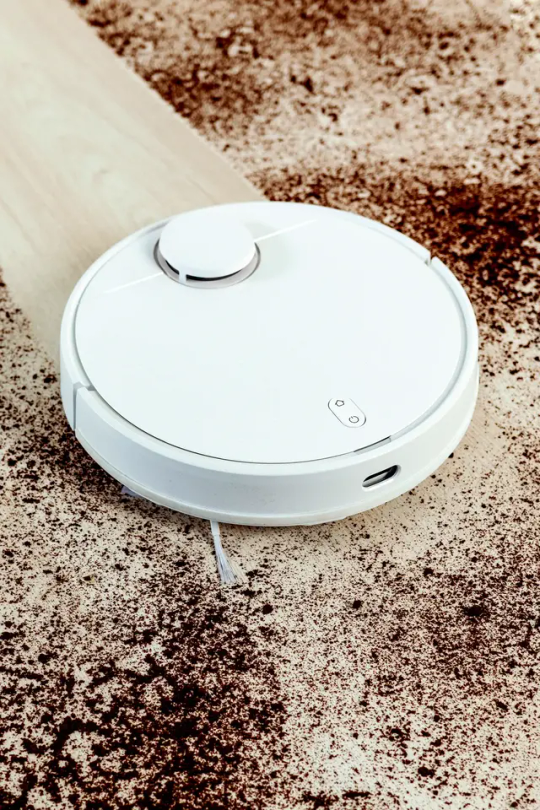
Read more:https://shorturl.at/RMXrO
0 notes
Text
Solar Panel Cleaning Robot Market Forecast 2024 to 2032
A solar panel cleaning robot is an automated device designed to clean solar panels, which can become dirty over time due to dust, debris, and environmental factors. These robots use brushes, wipers, or other cleaning mechanisms to remove dirt and grime from the solar panel surfaces, optimizing their efficiency and energy production. Equipped with sensors and advanced navigation technology, these robots can operate autonomously, ensuring thorough and efficient cleaning without the need for manual intervention. Solar panel cleaning robots are crucial for maintaining the performance and longevity of solar energy systems.
Solar Panel Cleaning Robot Market was valued at USD 2155 Million in 2022 and is expected to register a CAGR of 13.7 1% by 2032.
The significant drivers in the solar panel cleaning robot market include the increasing adoption of solar energy systems and the need to maintain their efficiency, the growth of large-scale solar installations where manual cleaning is impractical, and the desire to reduce operational costs by optimizing energy output.
Get Free Sample PDF
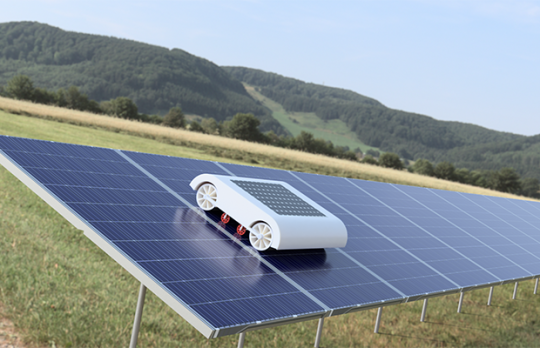
0 notes
Video
youtube
✨ Robot Vacuum and Mop Combos 2023 | HONITURE, Laresar, Proscenic, SHARK...
1 note
·
View note
Text
HVAC (AC) Robotic Duct Cleaning | HVAC(AC) Cleaning In Delhi
Table of Contents
Introduction to HVAC Robotic Duct Cleaning
Why Duct Cleaning is Important
Traditional Duct Cleaning vs. Robotic Duct Cleaning
How Robotic Duct Cleaning Works
Benefits of Robotic Duct Cleaning
Signs Your Ducts Need Cleaning
How Often Should You Clean Your Ducts?
Choosing the Right HVAC Duct Cleaning Service
FAQs About Robotic Duct Cleaning
Conclusion
Introduction to HVAC Robotic Duct Cleaning

Why Duct Cleaning is Important
Dirty air ducts can lead to poor air quality, which can cause allergies, respiratory issues, and reduced HVAC efficiency. Keeping your ducts clean ensures healthier air circulation and improves the overall performance of your HVAC system.
Traditional Duct Cleaning vs. Robotic Duct Cleaning
FeatureTraditional Duct CleaningRobotic Duct CleaningCleaning MethodManual brushing and vacuumingAutomated robots with cameras and brushesEffectivenessMay miss hard-to-reach areasThorough and precise cleaningTime EfficiencyLabor-intensive and time-consumingFaster and more efficientInspectionLimited visual confirmationLive video feedback for thorough monitoringCostMay be cheaper upfrontHigher initial cost but better results
How Robotic Duct Cleaning Works
Robotic duct cleaning involves using advanced robots equipped with cameras, brushes, and vacuums. The process includes:
Inspection — A robot is inserted into the duct to assess the level of contamination.
Cleaning — The robot uses rotating brushes and vacuum suction to remove debris.
Disinfection — Some robots spray antimicrobial agents to kill bacteria and mold.
Final Inspection — A final check is done using cameras to ensure thorough cleaning.
Benefits of Robotic Duct Cleaning
Thorough Cleaning — Robots can reach every corner of the ducts, ensuring no dust or debris is left behind.
Better Air Quality — Reduces allergens, mold, and contaminants in the air.
Improved HVAC Efficiency — Clean ducts allow better airflow, reducing energy consumption.
Reduced Maintenance Costs — Cleaner ducts mean less strain on the HVAC system, reducing the chances of breakdowns.
Eco-Friendly — Uses minimal chemicals and energy-efficient methods.
Signs Your Ducts Need Cleaning
Visible dust and debris around vents
Increased allergy symptoms or respiratory issues
Musty or unpleasant odors from vents
Higher energy bills due to reduced airflow
Pest infestations in or around ducts
How Often Should You Clean Your Ducts?
Experts recommend cleaning your ducts every 3 to 5 years. However, you may need more frequent cleaning if:
You have pets that shed hair and dander
There are smokers in the household
Someone in the home has allergies or respiratory issues
You recently renovated your home
Choosing the Right HVAC Duct Cleaning Service
Experience and Reputation — Look for companies with good customer reviews and proven expertise.
Certifications and Licensing — Ensure they comply with industry standards.
Technology Used — Choose services that use robotic cleaning for better results.
Transparency — A reliable company will provide before-and-after visuals of your ducts.
Pricing — Avoid extremely cheap services, as they may not be thorough.
FAQs About Robotic Duct Cleaning
1. Is robotic duct cleaning safe for my HVAC system?
Yes, robotic duct cleaning is designed to be safe for all types of ductwork. The robots use soft brushes and controlled suction to avoid damage.
2. How long does the cleaning process take?
The duration depends on the size of your duct system, but typically, it takes between 2 to 4 hours.
3. Will robotic duct cleaning reduce my energy bills?
Yes, clean ducts improve airflow, allowing your HVAC system to work more efficiently and use less energy.
4. Can robotic cleaning remove mold from my ducts?
Yes, robotic duct cleaning can remove mold, and some services offer antimicrobial treatments to prevent future growth.
5. Is robotic duct cleaning more expensive than traditional cleaning?
It may have a higher upfront cost, but it provides a more thorough cleaning, reducing the need for frequent maintenance and saving money in the long run.
6. Can I clean my air ducts myself?
DIY duct cleaning is not recommended because it’s difficult to reach deep areas, and improper cleaning can damage your ducts or spread contaminants.
7. How do I know if my ducts are really clean after robotic cleaning?
Most professional services provide video footage of the ducts before and after cleaning, so you can see the difference.
Conclusion
Robotic duct cleaning is a game-changer in maintaining HVAC efficiency and indoor air quality. It offers a more effective, efficient, and thorough cleaning solution compared to traditional methods. If you’re experiencing poor air quality, high energy bills, or allergy symptoms, it might be time to consider robotic duct cleaning for your HVAC system.
#HVAC (AC) Robotic Duct Cleaning#Commercial Hvac Duct Cleaning Services in India#Commercial Air Duct Cleaning Company near me#HVAC Robotic Duct Cleaning#HVAC duct Cleaning
0 notes
Text
Itsclaiming it ccnan do anything. Ok pieceof shit cleaningrobot give me my bones back
0 notes
Video
youtube
China Best Solar Panels Automatic Cleaning Robot with Soalr cleaning Kit Brush #short #robot
Solar cleaning robots play a significant role in maintaining the efficiency and longevity of solar panels by keeping them clean for solar. Role of Solar Cleaning Robots: Efficiency Improvement: Dirty solar panels can experience a significant reduction in energy conversion efficiency. Solar cleaning robots help maintain the cleanliness of the panels, allowing them to absorb more sunlight and produce more electricity. Maintenance: Regular cleaning prevents long-term damage to solar panels caused by the buildup of debris and pollutants, which can lead to reduced panel lifespan and increased maintenance costs. Autonomous Operation: Solar cleaning robots are equipped with sensors, algorithms, and navigational capabilities that allow them to operate autonomously or semi-autonomously. This reduces the need for manual intervention and human labor in cleaning operations. Coverage: These robots can cover large areas efficiently, ensuring that all panels receive consistent cleaning, even in challenging terrains or hard-to-reach locations. Safety: Cleaning solar panels manually, especially on rooftops or in large solar farms, can be risky for human workers. Solar cleaning robots minimize these risks by eliminating the need for personnel to work at elevated heights. URL:https://www.teejoinsolar.com Global Sources:http://www.globalsources.com/teejoin.co Facebook:https://www.facebook.com/TeejoinSolar LinkedIn:https://www.linkedin.com/company/teejoin-solar-technology/ Instagram:https://www.instagram.com/teejoin_solar/ More:https://linktr.ee/teejoin_appliances #SolarCleaningRobot #solarcleaning #solarpower #solarinverters #flexiblesolarpanels #solarenergy #solarsystem #solarpanels #homeiswhereyouparkit #teejoinsolar #solarbatteries #solarpanel #solarenergysystem #Solarpoweredcleaningrobot #solarcompany #Solarcell #cleaningtools #cleaning #robot #cleaningrobot #solarpower #solarcleaningBrush #solarenergy #SolarPanelCleaningBrush #solarpanels #solarsystem #homeiswhereyouparkit #flexiblesolarpanels #solarpanelsforhome #solarcleaningrobotprice #solarcleaningrobotprice #solarcleaningkit #solarpanelcleaningkit #cleaningasolarpanel #diycleansolarpanels #diysolarcleaning #solarpanelcleaningsystemforhome #rooftopsolar #Rooftopsolarsystems #solarprojects
0 notes
Text
The Rise of Smart Cleaning: How House Cleaning Services Embrace Technology
Cleaning our homes is a chore that most of us would rather avoid. Fortunately, advancements in technology have revolutionised the way house cleaning services operate. From robotic vacuum cleaners to smart scheduling apps, the rise of smart cleaning has made our lives easier and our homes cleaner. In this article, we will explore how house cleaning services are embracing technology to provide efficient and convenient cleaning solutions.
Robotic Cleaners: The Future of House Cleaning
Robotic vacuum cleaners have become a game-changer in the world of cleaning. These intelligent devices use sensors and advanced algorithms to navigate through your home, collecting dust and debris along the way. With their ability to clean hard-to-reach areas and under furniture, these robots save time and effort for both homeowners and cleaning services.
House cleaning services in Beaumont Hill are now incorporating robotic cleaners into their arsenal of tools. These robots can efficiently clean multiple homes in a day, ensuring a thorough and consistent cleaning experience. Moreover, they are equipped with smart mapping technology that allows them to learn the layout of each home, enabling them to clean more effectively with every visit.
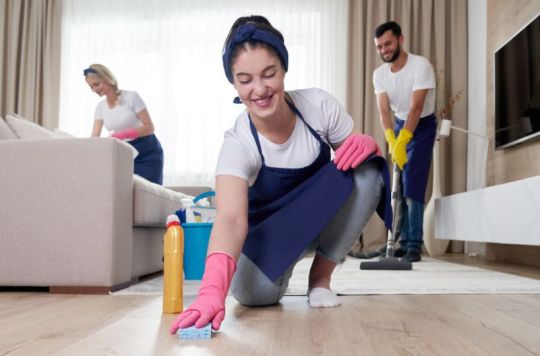
Smart Scheduling Apps: Convenience at Your Fingertips
Gone are the days of making lengthy phone calls to schedule a cleaning service. Smart scheduling apps have made the booking process quick and convenient. With just a few taps on your smartphone, you can now schedule a cleaning service at your preferred date and time.
House cleaning services in Beaumont Hill have recognised the importance of such apps and have embraced them wholeheartedly. These apps provide customers with the flexibility to choose cleaning slots that suit their schedules. Furthermore, they allow clients to customise their cleaning requirements, ensuring that specific areas or tasks are given priority.
IoT-Enabled Cleaning Devices: A Connected Cleaning Experience
The Internet of Things (IoT) has permeated almost every aspect of our lives, and cleaning is no exception. IoT-enabled cleaning devices offer a connected cleaning experience, allowing homeowners and cleaning services to monitor and control cleaning activities remotely.
Imagine being able to start your vacuum cleaner or mop from your office or while running errands. With IoT-enabled devices, this is now a reality. House cleaning services can remotely access these devices, ensuring that cleaning tasks are carried out even when no one is present at the property.
Smart Cleaning Solutions: Efficiency and Sustainability
In addition to convenience, smart cleaning solutions also prioritise efficiency and sustainability. Many house cleaning services are now using eco-friendly cleaning products and adopting green practices. By using smart cleaning devices, these services can optimise resource usage and minimise waste.
For instance, robotic cleaners are designed to use minimal power while providing maximum cleaning efficiency. They are also programmed to navigate in the most efficient manner, reducing cleaning time and energy consumption. Moreover, smart sensors in these devices can detect areas that require more attention, allowing for targeted cleaning and reducing the need for excessive use of cleaning products.
The rise of smart cleaning has transformed the house cleaning services industry, providing customers with efficient, convenient, and sustainable cleaning solutions. Robotic cleaners have revolutionised the way homes are cleaned, while smart scheduling apps have made booking a cleaning service a breeze. IoT-enabled devices offer a connected cleaning experience, allowing remote monitoring and control. Moreover, smart cleaning solutions prioritise efficiency and sustainability, benefiting both customers and the environment.
House cleaning services Beaumont Hill are at the forefront of embracing these technological advancements. By incorporating smart cleaning technology into their operations, they are able to provide superior cleaning services that meet the evolving needs of their customers. As technology continues to advance, we can expect even more innovative solutions that will further revolutionise the way we clean our homes.
0 notes
Text
Cleaning Robot Market Witnesses Strong Growth with Innovations in Robotics and Smart Connectivity
The cleaning robot market is experiencing dynamic growth, fueled by rapid technological advancements, increased urbanization, and rising consumer demand for convenience. These automated devices, once a novelty, have now evolved into essential household and commercial cleaning solutions. From robotic vacuum cleaners and floor scrubbers to window and pool cleaners, the market has expanded across a variety of applications and industries.
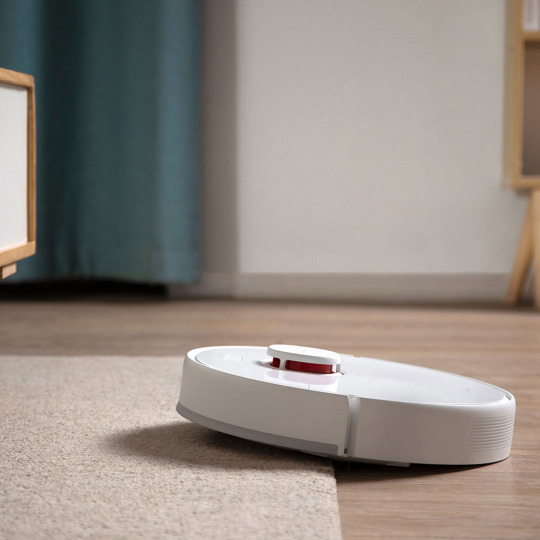
Market Drivers
One of the primary factors driving the cleaning robot market is the increasing awareness and adoption of smart home technologies. Consumers are becoming more tech-savvy and are seeking intelligent appliances that save time and reduce manual effort. Cleaning robots offer a compelling value proposition — they operate autonomously, often via mobile apps, and are equipped with AI-driven navigation, mapping, and scheduling features.
Labor shortages and rising labor costs in commercial sectors are also fueling demand, especially in facilities management, hospitality, and healthcare. These industries benefit from robotic cleaners that can maintain hygiene standards consistently while reducing reliance on human workers.
Furthermore, COVID-19 significantly accelerated the demand for automated cleaning solutions. The pandemic underscored the importance of hygiene and sanitation, leading to the deployment of disinfection robots in hospitals, offices, and public spaces. This shift has had a lasting impact on consumer and institutional preferences for robotic cleaning solutions.
Key Segments
The cleaning robot market can be segmented based on product type, end-user, and region.
By Product Type: Robotic vacuum cleaners dominate the segment due to widespread consumer adoption in residential settings. Floor-cleaning robots, window-cleaning robots, and pool-cleaning robots are also gaining traction.
By End-User: The residential sector leads in adoption, driven by the need for convenient, efficient cleaning solutions. However, the commercial segment is expanding rapidly, with robots being deployed in airports, shopping malls, hospitals, and hotels.
By Region: North America holds a significant market share due to early adoption of smart home technology and high disposable incomes. Europe and Asia-Pacific are also key regions, with the latter showing fast-paced growth driven by urban development and tech adoption in countries like China, Japan, and South Korea.
Technological Advancements
AI, IoT, and machine learning have revolutionized cleaning robots. Modern robots use LIDAR-based mapping, SLAM (Simultaneous Localization and Mapping), and camera vision to navigate complex environments and avoid obstacles. Additionally, integration with voice assistants like Alexa and Google Assistant enhances user convenience.
Battery technology has also improved, enabling longer operational times and faster charging. Moreover, robots now come with self-cleaning and auto-dust disposal features, further reducing human intervention.
Competitive Landscape
Key players in the market include iRobot Corporation, Ecovacs Robotics, Samsung Electronics, Xiaomi Corporation, Dyson Ltd, and LG Electronics. These companies are focused on R&D, product innovation, and strategic partnerships to maintain their market position. Startups are also entering the market with niche and cost-effective solutions, contributing to increased competition.
Mergers, acquisitions, and regional expansions are common strategies among leading manufacturers. For example, iRobot continues to enhance its product capabilities through AI integration, while Xiaomi focuses on affordability and smart connectivity in emerging markets.
Challenges
Despite robust growth, the cleaning robot market faces challenges. High initial costs, especially for advanced commercial models, can deter small businesses or price-sensitive consumers. Maintenance, repair, and operational efficiency in complex environments also pose hurdles. Moreover, privacy concerns around data collection and storage in smart cleaning devices remain a topic of discussion.
Future Outlook
The cleaning robot market is expected to grow significantly in the coming years, with analysts projecting a CAGR of over 15% from 2024 to 2030. As technology becomes more affordable and accessible, adoption rates in both residential and commercial spaces will surge. Moreover, innovations in AI and robotics will continue to push the boundaries of what cleaning robots can achieve.
Integration with smart city infrastructure, enhanced mobility, and autonomous multi-function capabilities are likely to shape the future of the market. Governments and institutions focused on sustainable and automated urban management may also drive demand for eco-friendly and energy-efficient robotic solutions.
0 notes
Text
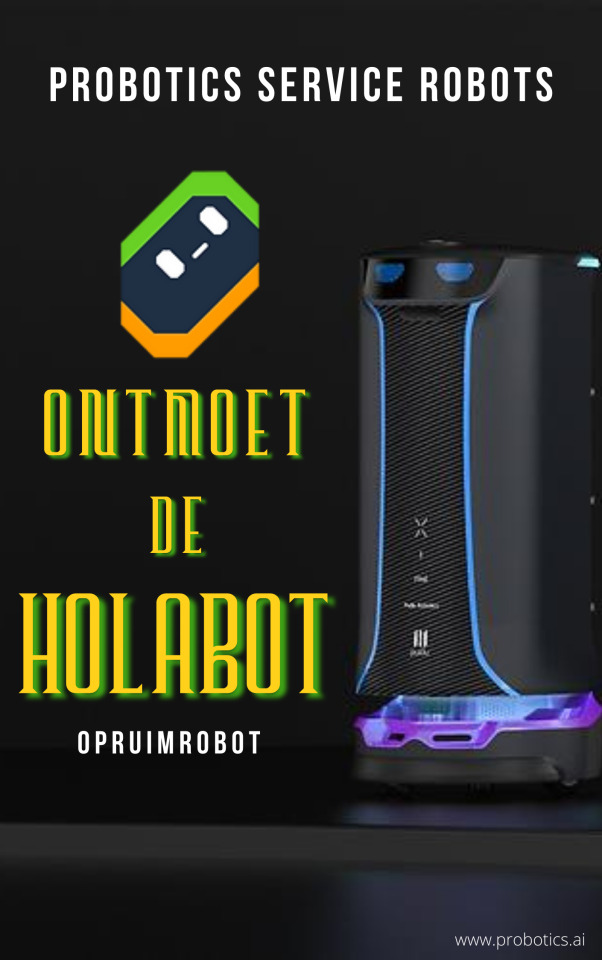
Probotics AI HolaBot opruimrobot
Probotics HolaBot is een opruimrobot die op innovatieve wijze autonome robots toepast op voedsel, medische en andere gebieden. Het is uitgerust met intelligente bezorging op verschillende plaatsen. Het ontwerp is voorzien van de nieuwste technologie waardoor elke interactie met HolaBot zorgt voor de optimale robotervaring. Installeer vandaag nog! Bel ons op +31618088102 of bezoek de website https://www.probotics.ai/holabot
#robots#cleaningrobots#deliveryrobots#holabot#holabotpudu#HolaBot robot#pudu robot#pudu robotics#Pudu service robot
1 note
·
View note
Text
Looking for the best floor cleaning robots?
Visit YES Clean,
YES Clean supplies a wide range of floor cleaning robots & autonomous sweepers in the UAE, with their range of sensors covering each point of the targeted area.
https://www.yesclean.ae/cleaning-robot.php
0 notes
Text

Revolutionizing Airport Cleaning with AI-Powered Robots
Keeping airports clean is no small task, with thousands of travelers passing through daily. Traditional cleaning methods lack consistency and efficiency, making them ineffective for large-scale sanitation needs.
This is where Vulcan, an autonomous cleaning robot for airports, steps in to redefine cleaning standards.
Why Airports Need Cleaning Robot Airports
🧼 Non-stop cleaning for high-traffic areas ⚡ AI-powered navigation for efficient operations 📊 Data-driven cleaning schedules for optimized workflows
The Future of Airport Robotics is Here
With the integration of AI and automation, airport cleaning robot are the future of hygiene management.
1 note
·
View note
Photo

Planning to buy a cleaning machine? Why Don't you think about the machinery equipment rental company? Visit YES Automation, a leading machinery rental company in UAE. Why buy it when you can rent it from us. Give us a call and let's talk !!
Visit: https://www.yesautomation.ae/cleaning-machines.php
0 notes